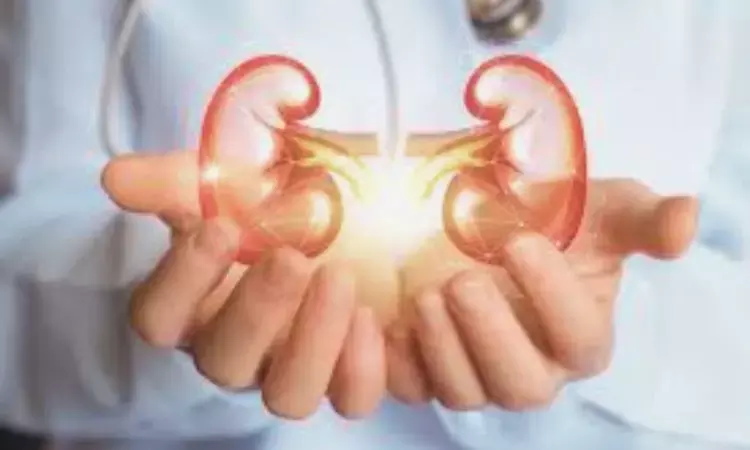- Home
- Medical news & Guidelines
- Anesthesiology
- Cardiology and CTVS
- Critical Care
- Dentistry
- Dermatology
- Diabetes and Endocrinology
- ENT
- Gastroenterology
- Medicine
- Nephrology
- Neurology
- Obstretics-Gynaecology
- Oncology
- Ophthalmology
- Orthopaedics
- Pediatrics-Neonatology
- Psychiatry
- Pulmonology
- Radiology
- Surgery
- Urology
- Laboratory Medicine
- Diet
- Nursing
- Paramedical
- Physiotherapy
- Health news
- Fact Check
- Bone Health Fact Check
- Brain Health Fact Check
- Cancer Related Fact Check
- Child Care Fact Check
- Dental and oral health fact check
- Diabetes and metabolic health fact check
- Diet and Nutrition Fact Check
- Eye and ENT Care Fact Check
- Fitness fact check
- Gut health fact check
- Heart health fact check
- Kidney health fact check
- Medical education fact check
- Men's health fact check
- Respiratory fact check
- Skin and hair care fact check
- Vaccine and Immunization fact check
- Women's health fact check
- AYUSH
- State News
- Andaman and Nicobar Islands
- Andhra Pradesh
- Arunachal Pradesh
- Assam
- Bihar
- Chandigarh
- Chattisgarh
- Dadra and Nagar Haveli
- Daman and Diu
- Delhi
- Goa
- Gujarat
- Haryana
- Himachal Pradesh
- Jammu & Kashmir
- Jharkhand
- Karnataka
- Kerala
- Ladakh
- Lakshadweep
- Madhya Pradesh
- Maharashtra
- Manipur
- Meghalaya
- Mizoram
- Nagaland
- Odisha
- Puducherry
- Punjab
- Rajasthan
- Sikkim
- Tamil Nadu
- Telangana
- Tripura
- Uttar Pradesh
- Uttrakhand
- West Bengal
- Medical Education
- Industry
Diabetic kidney disease: Research identifies Cause and possible therapeutic approach

Diabetic kidney disease-a complication of diabetes-is considered the leading cause of chronic kidney disease and kidney failure worldwide. It is associated with changes in the structure and function of the kidneys and ultimately leads to kidney damage.
Signalling mechanism triggers oxidative stress
A research team at the University of Leipzig Medical Center has now identified a signalling mechanism that causes damage to kidney cells. Coagulation factor FXII (F12), also known as Hageman factor, is involved in this process. “Its production is increased in the body when blood sugar levels are high,” says Ahmed Elwakiel, lead author of the study and scientist at the University of Leipzig Medical Center. Independent of its normal function in blood coagulation, FXII has a different effect on the tubular epithelial cells of the kidney: through a receptor mechanism, it forms a complex with two other proteins that have different functions in the body. This complex acts like a molecular on-off switch. It sends a signal to produce more oxygen free radicals. This leads to oxidative stress and DNA damage in the cell. “In contrast to normal cell communication, however, the switch remains on under diabetic conditions; there is no pause button,” says Ahmed Elwakiel. In the long term, the constantly increasing oxidative damage can neither be absorbed nor repaired. The kidneys then no longer function properly and the problem worsens over time.
Coagulation factor useful as a diagnostic marker
“In our study, we show that FXII can also be detected in the urine of diabetes patients with kidney disease,” explains Professor Berend Isermann, senior author of the current publication. “The concentration of FXII correlates with the severity of the disease: the higher the value, the more damaged the kidney is. This makes the value a useful diagnostic marker,” says the head of the Institute of Laboratory Medicine, Clinical Chemistry and Molecular Diagnostics. FXII can be detected in the early stages of the disease and is therefore an important indicator of whether treatment is likely to be successful.
To determine the presence of FXII in the human organism and how it affects diabetes, the researchers analysed clinical values, kidney biopsies and urine samples from several human cohorts, including the LIFE Adult Study from the Faculty of Medicine at Leipzig University and the HEIST-DiC cohort from Heidelberg University.
FXII inhibition as a possible therapeutic approach
The relationship between FXII and impaired kidney function was also clearly evident in mouse models: the scientists compared the kidney function of diabetic mice that produced FXII with that of mice in which they had temporarily blocked the production of FXII. “The kidney function of the mice that produced FXII was significantly worse,” says Elwakiel. Furthermore, inhibiting FXII production in mice with clinical signs of kidney damage largely improved kidney function. The approach discovered by the scientists could therefore also have a therapeutic outcome in cases of established kidney damage. “Another approach would be to prevent the formation of the entire signalling complex,” says the pharmacologist. In in vitro cell experiments, it was possible to stop the mechanism in this way.
No negative effect on coagulation
According to the authors of the study, no negative side effects on blood coagulation are to be expected from FXII inhibition. “The organism has various blood coagulation factors; it doesn’t necessarily need FXII to initiate coagulation. We know from other studies that its inhibition does not result in increased bleeding risk,” says Elwakiel.
Reference:
Elwakiel, A., Gupta, D., Rana, R. et al. Factor XII signaling via uPAR-integrin β1 axis promotes tubular senescence in diabetic kidney disease. Nat Commun 15, 7963 (2024). https://doi.org/10.1038/s41467-024-52214-8
Dr Kamal Kant Kohli-MBBS, DTCD- a chest specialist with more than 30 years of practice and a flair for writing clinical articles, Dr Kamal Kant Kohli joined Medical Dialogues as a Chief Editor of Medical News. Besides writing articles, as an editor, he proofreads and verifies all the medical content published on Medical Dialogues including those coming from journals, studies,medical conferences,guidelines etc. Email: drkohli@medicaldialogues.in. Contact no. 011-43720751


